Health & Medicine’s Health Equity Initiative recently completed research examining how the ACA and state level health reforms can support the move toward health equity and stronger communities in the Chicago area with a specific focus on the Western Suburbs. This research led to two papers that are available now:
Beyond the Clinic: A National Health Equity Review Implications for our Local Safety Net
This policy and practice review of national work examines how the safety net can use this time of health reform to shift toward addressing social determinants of health, structural determinants of health inequities, and ultimately health equity.
While there are ample studies and papers detailing clinical care interventions and programs to provide more services to meet unaddressed needs, these studies rarely focus on the need for large safety net institutions to utilize their individual and collective political power to change the structural inequities that drive the inequitable distribution of social determinants of health. To make a new contribution to the trajectory of healthcare’s interest in advancing health equity, this paper addresses how the power of the health sector—which represents roughly 18% of the U.S. economy—could be better used to influence structural drivers of inequities.
A Qualitative Review of Chicago’s West Suburban Safety Net: Consequences, Adaptation, and Recommendations for Future Reform
This study extends previous research examining the impact of the ACA and state Medicaid expansion on the safety net. The paper analyzes how the current political context is impacting the safety net sector while also examining overall adaptations to health reform, understanding its consequences, and identifying safety net stakeholders’ policy and philanthropy recommendations for future reform. This research focused specifically on the safety net in western suburbs and was based on key informant interviews with executive leadership and focus groups with staff from thirteen area FQHCs, hospitals, free and charitable clinics, insurers, and community-based organizations. In addition to qualitative analysis, our report offers policy and practice recommendations to help address the challenges of reform at the institutional, state, and federal level.
